The Relational Paths Of Water
Wayuu Women Positioning Collective Relationships Around Water In La Guajira, Colombia
La Guajira is a region highly susceptible to desertification. It is one of the areas of Colombia most affected by climate change, experiencing intense droughts and severe water scarcity. The Wayuu people make up the largest Indigenous population in Colombia, numbering around 380,000, almost half of the population in La Guajira. They have legal rights over 28 collective territories, known as resguardos, covering approximately 1,084,027 hectares, which is nearly 50% of La Guajira territory. However, structural inequalities have long been a part of the Wayuu people’s relationship within La Guajira, alongside various forms of extractivism. This has led to irreversible changes in the territorial and environmental dynamics of La Guajira, impacting the Wayuu people’s relationship with and access to water. One example of this is the expansion of the El Cerrejón mine. The Cerrejón mine, the largest open-pit coal mine in Colombia and Latin America, has gravely affected the water in Wayuu territory.
Wayuu women make water politically visible. This is not only because water is a living being that must be protected or because more-than-human relationships are fragile in the face of extractive processes. It is also because water enables the continuity of Wayuu life and all the relationships that exist in Wayuu territory and La Guajira in general. Mining has led to protests from the Wayuu people because of the changes that the mines have brought about in Wayuu relationships with their sacred sites, water as a living entity, and other socio-cultural, environmental and territorial transformations.
“The territory is currently facing one of the greatest struggles we have ever imagined. Without being able to reconcile with Mother Earth due to the damage caused by decades of ‚coal‘ mining in La Guajira. (FMW, 2023: 7)
This text is based on collaborative research and activism in which I have been involved in the territory of the Wayuu people. Specifically, I have worked with the grassroots organisation Sütsüin Jieyuu Wayuu – Fuerza de Mujeres Wayuu (Wayuu Women’s Force – FMW). FMW began their mobilizations in 2006 to protest and denounce in national and international political spaces the effects of mining on their territories and water sources.
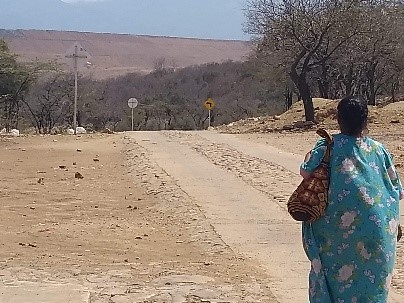
Fig. 1 Territorial transformations in Wayuu territory due to the Cerrejón coal mine. What looks like a mountain in the background is the debris removed from the mine. Near to the community of Provincial in La Guajira. Source: Astrid Ulloa, July 2019.
Wayuu women are challenging perceptions of water as a commodity by corporations and the State by demanding the recognition of water as a political actor as well as their relationship with water as the centre of their life. As Wayuu leader Jakeline Romero Epiayu, said in 2019:
“For the Wayúu people, water, as part of the integrity of the territory and of life itself, has a sacred place. […] Water is such a vital element of the territory that it also has its own space. […] When you go to a community, you find the living space distributed according to the culture, as we have designed it and in accordance with our social organization, and the place of water is always a special place. […] That space must be given to that entity or that body, that inhabitant that is there, which is water. […], because it is part of […] life, it is also part of the spiritual aspect and part of the connection with the territory”.
To defend the water and to confront the extractive processes – first the coal mine and now energy transition process – Wayuu women have done collective practices, meetings and protests, developing a political repertory that is based on their daily practices and memories. In 2012, FMW with other grassroots and NGO called for a regional mobilization against mining and in support of the the defence of the Rancheria River. The Wayuu’s demands imply a particular positioning of their life politics and their relationships with the territory. Wayuu leader Jazmín Romero Epiayu (2015) explains how they understand territory:
„The territory, for us, is alive and represents Wayuu women. Mna is a woman, she is the earth. Juyaá is the one who fertilizes, who is part of everything that has to do with water, be it rain, water sources, rivers, streams. […] The Bruno creek represents the veins, it is the vein of the Earth, it is the vein of Woumainkat; and for us, cutting a vein means death” (2015).
Since 2014, FMW has led national and international efforts to denounce and defend Bruno Creek. The Cerrejón mine diverted Bruno Creek by 3.6 km to expand coal production, implementing new technical and political mechanisms that affected not only Bruno Creek, but also the cultural, territorial, and water dynamics of the Wayuu people.
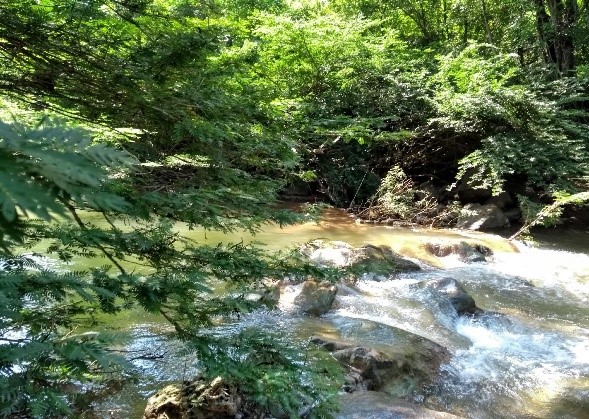
Fig. 2 This part of Bruno Creek has not been diverted, and the Wayuu people are defending it. They do not want the Cerrejón mine to destroy the water network that sustains life in order to mine coal. Source: Astrid Ulloa, September 2018.
Indigenous women in Latin America have centred their political action on defending their bodies and territories against various forms of violence and inequality. The concept of the body-territory is central to their struggle. It represents an intrinsic connection between the individual, the collective, and the territory and all living beings. Wayuu women have an intimate and caring relationship with water, which allows them to maintain the relationship between the body-territory-water, as well as the territories of water. These territorialities, or body-territorialities, express female territoriality in specific places, as well as territoriality that merges with the territoriality of non-humans at specific moments. The non-humans also have their own specific places. This implies understanding the ways of knowing and the places of knowledge that traverse the territories of indigenous women. These alternative ways of knowing incorporate different types of memory, including non-human memory. This leads us to understand the memories of humans and non-humans as being co-produced permanently and in diverse temporalities and spatialities that converge.
![The coal mine diverted the Aguas Blancas stream, causing it to dry up. According to Yaneth Ortiz, this process affected the Wayuu body-territory-water relationship. Source: Astrid Ulloa, July 2019.]](https://boasblogs.org/wp-content/uploads/2025/09/Ulloa-image-3.jpg)
Fig. 3 The coal mine diverted the Aguas Blancas stream, causing it to dry up. According to Yaneth Ortiz, this process affected the Wayuu body-territory-water relationship. Source: Astrid Ulloa, July 2019.
The relationships between humans, territories, and water are constantly co-produced, intertwined with emotions, affections, and memories. Memories are transmitted collectively and across generations. Thus, keeping relationships with non-humans alive allows them to defend the Wayuu’s territory. The memories imply too much to continue their conceptions through generations. As Wayuu leader Jazmin Romero Epiayu said in 2025:
„That is passing on the cycle of life or water from generation to generation, because water is closely linked to our bodies. […] [Our] education itself is precisely about safeguarding the water spring ‘eye of water’. All eyes of water have a spirit […]. There is a spirit that protects [each one], and that spirit is conciliatory. […] For the most part […] it reconciles with us, with humans, and says: well, you take care of me, and I’ll take care of you.“
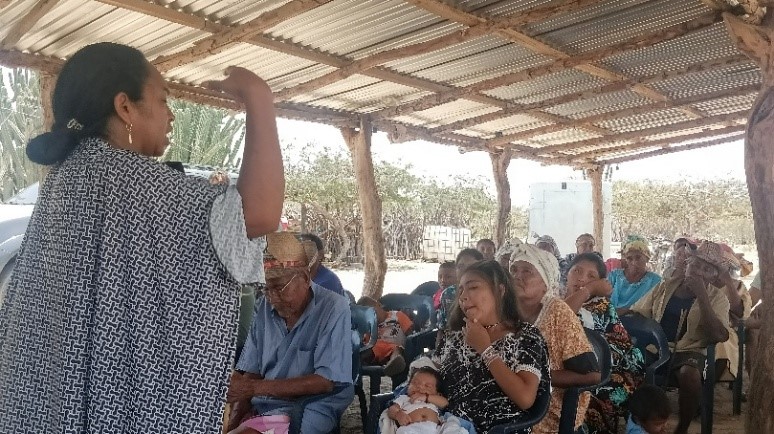
Fig. 4 Wayuu leader, Jazmín Romero Epiayu in a collective meeting discussing the future effects of the energy transition on Wayuu´s territory and water. Source: Astrid Ulloa, February 2025.
Wayuu people know that they cannot break the rules of the water guardian, Pulowi. If they do that, she, Pulowi, will swallow them, eat them, take them away or make them ill. She also protects fishermen at sea and tells them how much fish they can catch. She tells them to catch a normal amount, not an excessive amount. She also knows what the weather will be like at sea because she controls the weather very well, for example, she controls hurricanes.
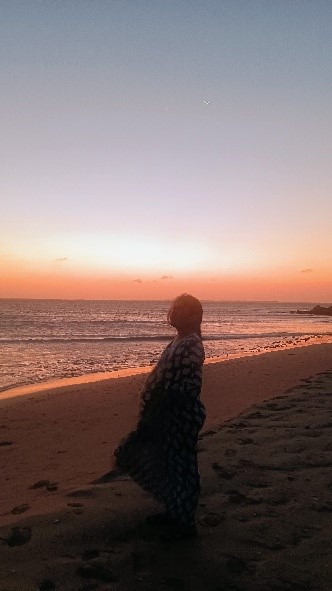
Fig. 5 The sea plays an important role in the Wayuu Apalaanchi’s sense of territory. The sea is part of their territory, but there are projects of offshore wind parks that jeopardize this Wayuu body-territory-water. Source: Astrid Ulloa, April 2024.
Territorial memories will be affected by extractive processes and the energy transition, imposing territorial, epistemic, and ontological violence by ignoring relationships with water.
In fact, the expansion of the Cerrejón mine has brought changes to the Wayuu territory and its relationship with water. The transformation of the Rancheria River and its tributaries have affected Wayuu’s territorial dynamics. The mining process reproduced the inequalities that previous extractive, economic and technological processes have generated in Wayuu territories, such as social and political fragmentation, unequal distribution of both environmental and economic impacts and disregard for Wayuu rights.
Confronting the notion of water as commodity by deploying the relational paths of water
The interrelation of the body-territory-water of Wayuu women is a defence mechanism that protects their intimate and everyday sphere from violent dispossession caused by extractive processes and transformations implemented without the consent of the Wayuu people. By positioning body-territory-water relationships based on interdependency between humans and non-humans, Wayuu women reveal an alternative ontology. Women visit water sites to perform rituals, cleanse negative energy and ask the spirit of Water for protection. For them, water is life and has a life of its own.
These processes help us to understand the complex relationship that the Wayuu, particularly women, have with spirituality and the paths of water. The paths of water encompass places of intimacy and its various forms, such as rain, aquifers, the sea, rivers and springs. They also include places of humans, and no humans encounters and routes through Wayuu territory. These paths reflect the emotions and connections that form bonds of interdependence with humans through networks of care. These paths of water must be followed and respected through spiritual and everyday relationships.
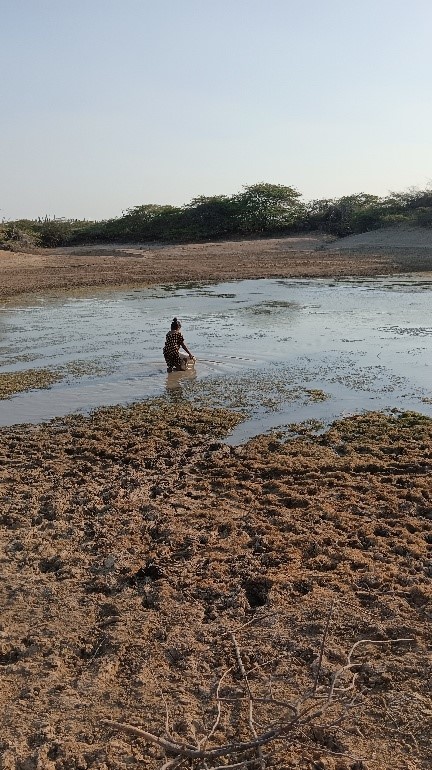
Fig. 6 Young girls are responsible for collecting water from the spring. From a young age, women develop a close relationship with water. Source: Astrid Ulloa, April 2024.
FMW initiated a discussion about the impact of the Cerrejón mine on women compared to men. Wayuu women state that, since mining began, their territory has become a place of suffering. For FMW, water is a political entity with its own territory and rights. However, when water is seen as a commodity, it generates inequalities and creates new ways of use, control and access for humans and non-humans alike.
Understanding the body-territory-water relationship has enabled a deeper insight into the interactions between the Wayuu people and their territory. While both men and women have a relationship with water, women have become much more visible because they have politicized this relationship to defend the territory against extractive processes. The cultural demands of Wayuu women challenge the external conception of water as a commodity by placing it at the centre of life. This involves establishing an interconnected web of life between rain, aquifers, groundwater and the sea.
The Wayuu collective’s actions and their embodied and embedded social relations, which maintain human interaction with water, offer new perspectives on commoning. They are also rethinking the concept of commoning, positioning water rights and the right to water as essential for humans and non-humans alike. These proposals arise from their collective knowledge, cultural practices and collective processes of reciprocity and sharing. These proposals are based on:
- Relational water justice demands, which involve the rights of water and right to water of humans and nonhumans, and reconsidering the relationship between humans, territories, and water from plural and diverse perspectives. This involves reconsidering and decolonizing the concept of ‚water‘ and the way water-related knowledge is produced. It also enables us to reconsider the relationship between humans, territories, and water (Ulloa, 2020).
- Relational perspectives of deep time, which recognizes the deep temporalities of non-human beings, such as water, that transcend human temporalities and affect no humans (Ulloa, 2025).
- Networks of affect and care imply collective and personal bonds with non-humans to maintain life in all its forms throughout time.
- An ethics of care is necessary, which recognizes that humans and non-humans can coexist and are interdependent based on emotional and affective relationships and mutual care.
- Collective proposals and communitarian and commoning practices relating to the paths of water. These proposals must be based on the autonomy, self-determination and political decision-making capacity of indigenous peoples.
These proposals are situated within specific contexts of time and place, as well as different temporal and spatial scales. In the political and institutional context of La Guajira, for instance, the concept of ‚water as collective‘ implies a diverse network of different social, cultural, institutional and political perspectives and actors who must consider ‚plural water governances‘ (Ulloa et al., 2022) in relation to water as an essential commoning process for sustaining life. These ontological perspectives can be extended to different ways of life and ways of establishing coexistence.
Wayuu women highlight the interconnectedness of bodies, territories, and waters, making other ontologies visible. This approach begins with recognizing that these relationships are permeated by feelings and emotions that establish and maintain them. These processes contribute to an understanding of the complexity of the Wayuu’s relationship with spirituality and water, especially that of the women. In the face of environmental and climate change, as well as the effects of new energy transition projects in their territories, Wayuu women from various areas have defended water and proposed ways of life around it.
References
Fuerza de Mujeres Wayúu (FMW). (2023). Mujeres amigas del viento. FMW. Riohacha.
Romero, Jazmín, “¿Qué pasaría si se desvía el arroyo Bruno?” Interview by CINEP, Programa por la Paz, YouTube video, 2015, 1:58–2:52
Ulloa, Astrid. 2025. Disyunción temporal de la transición energética: Los parques eólicos en territorio Wayúu, Colombia. In: Ulloa, Astrid y Kristina Dietz (eds.). 2025. Transformaciones sociales, políticas y ambientales en disputa: Prácticas, estéticas e imaginarios en América Latina. CALAS-CLACSO.
Ulloa, Astrid. 2020. The Rights of the Wayúu People and Water in the Context of Mining in La Guajira, Colombia: Demands of Relational Water Justice, Human Geography. Vol. 13(1) 6–15. DOI: 10.1177/1942778620910894
Ulloa, Astrid, Gerardo Damonte, Catalina Quiroga y Diego, Navarro. 2022. Rights to Water and Water’s Rights: Plural Water Governance in Mining Contexts of Colombia and Peru. in: Indigenous Water and Drought Management in a Changing World, Edited by: Miguel Sioui. Elsevier. Pp. 127-144.
Astrid Ulloa Cubillos is a Full Professor at the Department of Geography of the National University of Colombia. Her research and teaching focus on Indigenous peoples’ movements, ethnicity, eco-governmentality, environmental anthropology, feminism, and climate change with a particular expertise in Colombia. She has conducted ethnographic fieldwork with Wayúu people in La Guajira region, with various Indigenous people in the Sierra Nevada de Santa Marta, and with Indigenous Embera people in the Pacific Coast rainforest of Colombia’s Chocó region. Astrid has worked at the Universidad del Cauca, Université de Paris III, Universidad del Magdalena, Universidad de los Andes, and Instituto Colombiano de Antropología e Historia. Currently, she is involved as a researcher in the project ‚The Times of a Just Transition‘, funded by the British Academy.































